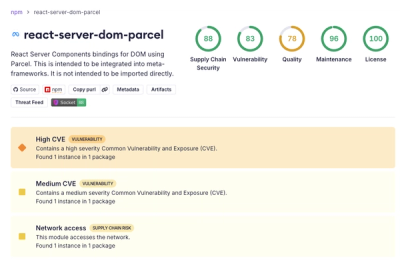Flatfile Vue.js Component - @flatfile/vuejs




NOTE: If you upgrading from previous versions (0.x), v3+ comes with some updates & breaking changes
BREAKING CHANGES:
Note that the latest version of @flatfile/vuejs 3+ uses the new @flatfile/sdk underneath which changes the API surface of interacting with the flatfile adapter entirely.
Read more about these changes here
There is now only 1 required input, and that is :token (which you must receive from your backend).
Read more about generating a Token here
Getting Started with Flatfile & Vue.js
We've made it really simple for you to get started with Flatfile with our new Flatfile Component. Here's what you'll need to know to get started.
First, install the dependency via npm:
npm install @flatfile/vuejs@3
This will give you access to the <flatfile-button /> component as well as the same basic functionality as our new SDK.
Simply add the import to a component where you want to include the Flatfile vuejs adapter via
import { FlatfileButton } from '@flatfile/vuejs';
export default {
name: 'DemoComponent',
components: {
FlatfileButton,
},
// ...
}
Now in your application simply utilize this new <flatfile-button> component, but make sure to pass in the 1 required prop, (and/or any optional ones you may need for your application).
The 1 required property is
:token (String) [ which you need to get from your backend ]
Read more here on how to implement a secure token.
<flatfile-button :token="token">
Upload to Flatfile!
</flatfile-button>
<script>
import { FlatfileButton } from '@flatfile/vuejs';
export default {
name: 'App',
components: {
FlatfileButton,
},
data: () => ({
token: 'Your_Token_You_Received_From_Your_Backend',
})
}
</script>
Here's an example passing down many of the other optional parameters/methods available to the adapter.
<flatfile-button
:token="token"
:onInit="onInit"
:onUpload="onUpload"
:onLaunch="onLaunch"
:onClose="onClose"
:onComplete="onComplete"
:onError="onError"
class="ff-button"
>
Upload to Flatfile!
</flatfile-button>
<script>
import { FlatfileButton } from '@flatfile/vuejs';
export default {
name: 'App',
components: {
FlatfileButton,
},
data: () => ({
token: 'Your_Token_You_Received_From_Your_Backend',
}),
methods: {
onInit: function (data) {
console.log('onInit')
console.log(data)
},
onUpload: function (data) {
console.log('onUpload')
console.log('data')
},
onLaunch: function (data) {
console.log('onLaunch')
console.log('data')
},
onClose: function (data) {
console.log('onClose')
console.log('data')
},
onComplete: function (data) {
console.log('onComplete')
console.log('data')
},
onError: function (error) {
console.log('onError')
console.log(error)
},
}
}
</script>
Additional options
You can also pass down mountUrl and apiUrl to the <flatfile-button>.
<flatfile-button
:token="token"
:mountUrl="mountUrl"
:apiUrl="apiUrl"
>
Upload to Flatfile!
</flatfile-button>
<script>
import { FlatfileButton } from '@flatfile/vuejs';
export default {
name: 'App',
components: {
FlatfileButton,
},
data: () => ({
token: 'Your_Token_You_Received_From_Your_Backend',
mountUrl: 'mountUrl',
apiUrl: '',
}),
}
</script>
Publishing
Update changelog (if needed), update package.json version (semver), add any updates needed for README (if needed), then run the following scripts:
npm run build:lib
npm publish







